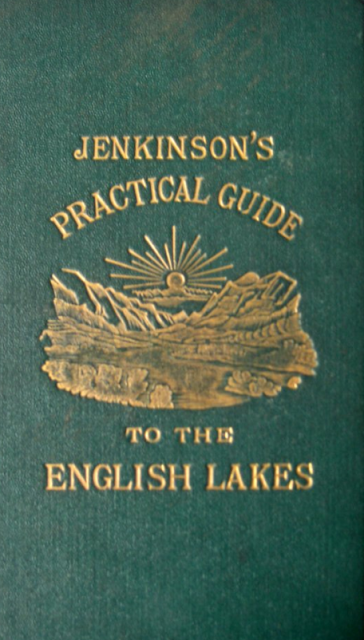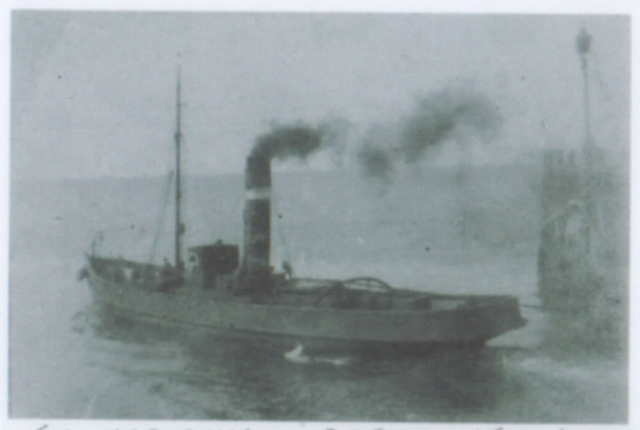The nations favourite 'must do' mountain walk has long been known to be the ascent of Helvellyn, which rises high above the Lake District valleys, creating a high division between Ullswater and Thirlmere. The ascent is equally popular from both valleys, the Glenridding ascent takes in the famous Greenside mine, where lead and silver were extracted from the valley, before the high elevation of Red Tarn is achieved.
 |
| Red Tarn with Helvellyn as the backdrop. |
 |
| The view from Helvellyn, looking to Ullswater with Swirral Edge to the left. |
 |
| Striding Edge, with Red Tarn just in view on the left. |
From here a decision can be made to either take the famous route of Striding Edge, to the south of the tarn, or Swirral Edge to the north of it. The Striding Edge route is another 'must do' feature of this fell for many walkers, and is famed for the tragic death of Charles Gough in April 1805; the two are usually combined as a horseshoe walk.
The Thirlmere route, on the west side of the mountain, is an initially steeper yet safer route to the top, levelling off to a more gentle incline after Browncove Craggs is passed. Either route takes you to the third highest peak in England, standing at 951m above sea level. The view across the bowl of Red Tarn, created by the packed ice turning as a giant ball and scouring out the bowl many thousands of years ago, is a sight to behold, the view expanding beyond towards Glenridding and Ullswater; hence it's popularity as a walk. Many have taken on the ascent only to find they are misted by cloud on the summit, making orientation difficult; many have become benighted in these conditions. Ad-hoc horseshoe shelters are common on lakeland summits, built by either farmers for livestock, or by walkers to create a break from the high arduous conditions; such a one exists on that other lofty peak of Skiddaw, towering above the town of Keswick. These are limited by their orientation and provide little or no shelter when the wind is howling into the opening, usually facing to the east. A biting winter Siberian gale, coming from the east, is perhaps the worst of all. In such conditions the Helvellyn cross shelter is a godsend to the stranded walker.
 |
| The Cross Shelter on Helvellyn summit. |
The mountain itself is also famed as the first plane landing on a mountain top, and a plaque denotes this feat of daring do, not too far south of the cross cairn shelter; this story adding to the mountain's allure.
As far back as June 1828 accounts were written where ardent walkers informed the readers, 'How sublime an elevation! How glorious the panorama! What mighty assemblage of mountains! What an infinite diversity of landscape! Water - in all its variety, from the little tarn collected in the hollows of the mountains and the streamlet that trickles down their sides, to the spreading lake, the far-winding river, the broad estuary and the the unlimited sea. .....' In the same account it led on to the walkers stating: 'the high and keen wind drove us to take shelter beneath the pile of stones which stands on Helvellyn Man.' It therefor gives reference to there being some form of shelter on the mountain, but not the cross itself, merely a mound of stones, no doubt a large cairn. Earlier in February of that year a group, including ladies, demolished their flask of brandy while hidden behind the same cairn for half an hour, before descending the mountain to escape the winter wind. Accounts of walkers sheltering behind a mere 'cairn of stones' were still being given through 1860's.
The popularity of the adventure to the summit was to cause discussion on a better shelter to serve any walkers caught out by the unrelenting and harsh fell top conditions. The English Lake District Association came into existence following a meeting at The Queen Hotel, Ambleside on 5th November 1877. It was formed to promote the Lake District as a tourist destination and to advertise it across the nation, particularly now that rail travel could bring those tourists direct to the towns of Windermere and Keswick. It had originally been suggested by Messrs. Cook and Son, tourist agents, in September 1876 following the death of the Silversmith Edward Barnard.
Cook's had suggested finger-posts but the cost and who was to pay for them was questioned. Cook's stated that an association, like the Black Forest Association, made up of local hoteliers of that area, should be similarly formed in the Lake District. Those association members paid for such posts as they gained large profits from the tourism. Messrs. Cook and Son stated that they were members and if one was similarly formed in the Lake District, they would pay their share.
A similar stone built 'refuge' had been proposed for Skiddaw and was reported as being agreed to by the Skiddaw owner, Lord Leconfield. It had been urged due to the tourists that were now making their way to the summit with great regularity. At the Lake District Association meeting of Tuesday 3rd February 1885 it was stated that, 'During the summer a substantial shelter was erected on the summit of Skiddaw at a cost of about £9.' This had been built by a W. Wilson of Keswick, at committee member of the association, at his own expense. It was also reported that the shelter had been damaged by the wind within one month and by November was in a useless condition.
On Wednesday 17th March 1886 at The Prince of Wales Hotel, Grasmere, the Association's meeting touched on a range of topics and improvements to the area. On the subject of Helvellyn consideration was given to a shelter on or near the summit, similar to the Keswick summit one, as well as placing a stone indicator on the summit of Grisdale Pass. At the meeting of Tuesday 8th June 1886 at Riggs Hotel, Windermere, the chairman, Mr. Harrison, reported that agreement had been reached for the erection of the shelter and indicators. Although no specific information is available for the actual date of construction and who the builder was, by the first week of September 1886 the celebrated guide, Johnny Mackereth, who led many celebrated parties out from The Prince of Wales Lake Hotel, Grasmere, was reporting it being a great boon and well resorted to. A further meeting was held at The Queen's Hotel, Ambleside, on Wednesday 22nd September where the cost of the construction was given as £8. It was also stated that the Skiddaw shelter repair had been deferred, 'on account of the difficulty getting water for cement, for which snow had to be used.' On Tuesday 14th December that same year, it was reported at the Association meeting again at Riggs Hotel, that the Skiddaw repair had now been conducted. On 27th June 1891 the Refreshment Hut at the breast of Skiddaw was advertised to be let. This draws a different and distinctive description between the summit hut/shelter to the known hut part way up Skiddaw Breast, from the car park at Latrigg.
 |
| Skiddaw Hut, on Skiddaw Breast |
 |
| The remaining foundations of the first Skiddaw Hut (next to the fence-line). |
The 30th September Association meeting in 1891 saw a proposal for a shelter 'similar to those on Helvellyn and Skiddaw, to be erected on Scawfell. At the the meeting of February 1893 it was stated that there were now shelters on Helvellyn, Skiddaw, Scawfell and Esk Hause. However, an article in the June edition of the Carlisle Journal stated that it would be a blessing if a similar cross shelter were on Skiddaw to provide the same shelter from the wind as that on Helvellyn. This suggests that the Skiddaw summit hut or shelter was now gone. Perhaps that cement required for the earlier repair had been for a base and the shelter was wooden, like the one on the breast route up from Latrigg. It seems to have disappeared quickly, yet the Helvellyn one stands to this day, and unblemished; a permanent structure.
**The research of the Skiddaw huts/shelters, becomes confusing. In 1880 accounts were written where walkers with Mr. Baddeley (Windermere) and Mr. Jenkinson (Keswick - see page bottom for the Jenkinson story) stopped for refreshments at the first of two huts, which was part way up the hill after Latrigg, only to find whilst they had beverages that the higher hut was now closed. (This is a clear indicator of an even earlier higher hut on Skiddaw.) This lower white hut on Skiddaw Breast was reported as still there in the summer of 1936 at least. I have checked the route up to Skiddaw from Latrigg and there is no remnants of any hut or shelter higher than the foundations photograph, nor on the summit, but something was clearly there. It may be that it was located at the site large horseshoe cairn. It is next to the trig point summit and seems unnaturally 'flattened'. There is also a drilled feature in a nearby rock that seems unexplained, and I would be interested in any explanation any reader is aware of. It has to be left to the interpretation of the reader AND I will keep on researching.
 |
| The drilled feature, in relation to the trig point. |
 |
| The flattened area of the horseshoe cairn. Could this have been the location of the summit hut? |
To this day the Helvellyn cross shelter has improved the comfort of many a Helvellyn walker, able to eat food in its protection, no matter what direction the wind came howling from; I myself had felt that relief under its protection. I have been thankful for the Skiddaw horseshoe also, but it in no way measures up to that afforded by the Helvellyn shelter.
(C)opyright





















